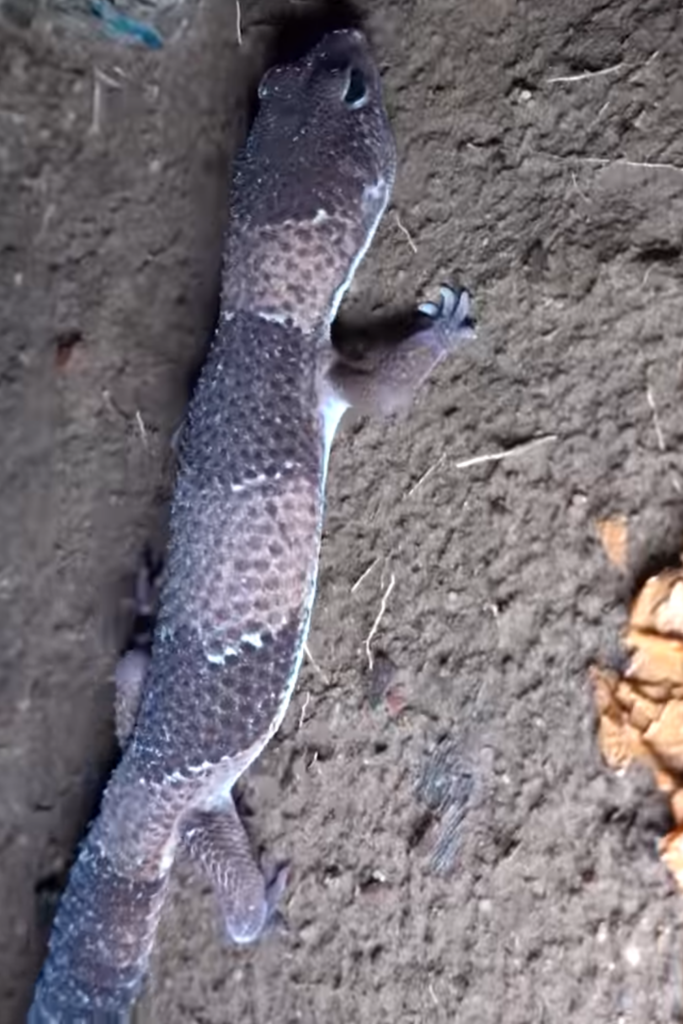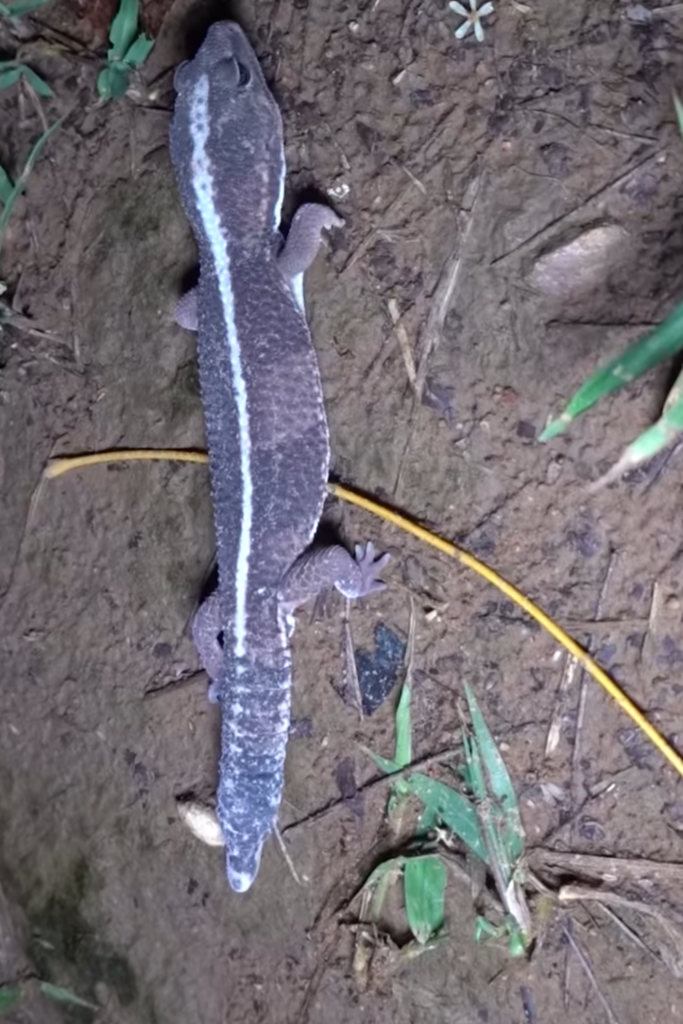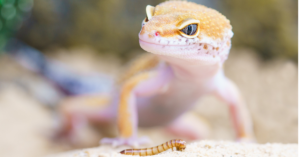When the sun sets, the world transforms for the leopard gecko in the wild. While many reptiles retreat into hiding, these nocturnal hunters emerge, using the lingering warmth of the rocks to fuel their nightly activities. In the video below, you’ll see a male gecko searching for a mate, engaging in a courtship ritual, and revealing how temperature plays a crucial role in determining the sex of their offspring.
Leopard geckos in the wild have evolved to thrive in some of the harshest environments, from rocky deserts to arid grasslands. Their survival depends on their ability to adapt—whether through temperature regulation, hunting techniques, or their unique behaviors. This article explores how these remarkable reptiles navigate their natural habitat, uncovering the strategies that make them one of the most resilient species in the wild.
Video courtesy of globalzoo
The Range of a Leopard Gecko in the Wild

Leopard geckos are native to the dry, rugged landscapes of South Asia, where extreme temperatures and limited resources shape their way of life. Their natural range spans Afghanistan, Pakistan, northwest India, western Nepal, and parts of Iran, regions known for their arid and semi-arid conditions. Unlike tropical geckos that thrive in humid environments, the leopard gecko in the wild have adapted to rocky deserts, dry grasslands, and scrublands, where shelter is scarce and temperature fluctuations are drastic.
These reptiles prefer terrains with clay or sandy soil, often seeking refuge in burrows, rock crevices, or beneath logs to escape the daytime heat. Their ability to utilize natural shelters allows them to conserve moisture and avoid predators. In some areas, they are found in arid forests, where they take cover under loose bark and fallen debris. Their adaptability to various microhabitats within their range is a key factor in their survival.
The climate across their range is harsh, with scorching summers and cold winters. During the warmer months, temperatures can soar well above 100°F (38°C), pushing geckos to become strictly nocturnal, emerging only after sunset to hunt and explore. In winter, temperatures can drop below 50°F (10°C), triggering a state of brumation—a hibernation-like dormancy that allows them to survive cold periods by relying on stored fat reserves.
Understanding where leopard geckos come from provides valuable insight into their behaviors, survival strategies, and the environmental conditions they require to thrive. Their ability to navigate these challenging landscapes highlights the remarkable adaptability that has allowed them to persist in the wild for millions of years.

Diverse Habitats and Adaptations
the leopard gecko in the wild have carved out a niche in some of the most unforgiving environments on Earth. Unlike tree-dwelling geckos that rely on sticky toe pads for climbing, these ground-dwelling reptiles are perfectly suited for life on rocky terrain, sandy deserts, and arid grasslands. Their preference for loose, compacted soil and rocky outcrops provides ample hiding spots, essential for avoiding predators and regulating body temperature.
In the wild, shelter is a crucial factor in their survival. During the scorching daytime heat, leopard geckos retreat into burrows, rock crevices, or under fallen branches to stay cool and conserve moisture. These natural shelters protect them from extreme temperatures and offer safety from predators such as snakes, birds, and larger reptiles. Some regions even use abandoned rodent burrows, sharing space with other desert-dwelling creatures.
Temperature plays a vital role in their daily and seasonal activity. The leopard gecko in the wild are ectothermic, relying entirely on external heat sources to regulate their body temperature. They emerge to hunt at night, using the warmth stored in rocks and soil to remain active. However, in areas where temperatures become dangerously high in the summer, they may enter estivation—a temporary dormancy that helps them conserve energy and survive prolonged heat waves.
Their ability to adapt to various microhabitats and changing environmental conditions is a testament to their resilience. Whether navigating the rocky outcrops of Pakistan or the dry grasslands of India, leopard geckos have evolved to make the most of their surroundings, demonstrating the incredible survival strategies that have kept them thriving for millions of years.
Leopard Gecko in the Wild: Surviving Harsh Climates
The leopard gecko in the wild are built for survival in environments where temperatures swing between extremes. In the heat of summer, daytime temperatures in their native habitats can exceed 100°F (38°C), while winter nights can drop below 50°F (10°C). These dramatic fluctuations require specific adaptations that allow them to endure scorching heat and bitter cold.
One of their most critical survival strategies is brumation, a hibernation-like state triggered by cold temperatures. During winter, when food becomes scarce and temperatures drop, leopard geckos retreat into burrows or crevices and enter a state of dormancy. Their metabolism slows, allowing them to survive for weeks or even months on stored fat reserves from their tails. Unlike true hibernation, brumating geckos may occasionally wake, drink water, and shift locations before resuming inactivity.
In contrast, during periods of extreme heat, the leopard gecko in the wild may enter estivation, a temporary state of dormancy that conserves energy and reduces water loss. They avoid dehydration and overheating by remaining hidden in cooler underground shelters during the hottest parts of the day. Adjusting their activity levels in response to environmental conditions is key to their survival.
Temperature also influences reproduction. Unlike mammals, where genetics determines the sex of offspring, leopard geckos rely on temperature-dependent sex determination (TSD). Eggs incubated at cooler temperatures (79°F/26°C) produce mostly females, while warmer conditions (90°F/32°C) result in mostly males. This natural mechanism is crucial in population dynamics and adaptation to environmental changes.
From enduring freezing nights to outlasting scorching days, the leopard gecko in the wild have evolved to withstand the harshest conditions. Their ability to regulate activity levels, store energy, and use environmental cues for reproduction demonstrates the remarkable resilience that has allowed them to thrive in some of the world’s most challenging habitats.
Hunting and Survival in the Wild
The leopard gecko in the wild is an efficient nocturnal hunter, relying on keen senses and stealthy approach to secure food in it’s arid environments. Unlike many other reptiles that actively chase down prey, they use a sit-and-wait strategy, patiently stalking insects before striking with precision. Their ability to remain motionless for long periods allows them to conserve energy while waiting for the perfect moment to pounce.
Their diet consists primarily of invertebrates such as crickets, beetles, moths, and roaches, but they are also known to consume scorpions, spiders, and even smaller lizards when the opportunity arises. Interestingly, leopard geckos have a higher tolerance to scorpion venom than many other animals, allowing them to target prey that would be dangerous to different predators. Occasionally, they may eat small vertebrates like newborn mice or juvenile geckos.
Hunting success depends heavily on environmental conditions. On warm nights, insect activity is high, giving geckos ample hunting opportunities. However, prey becomes scarce in colder months, requiring them to rely more on stored energy from their fat-storing tails. This adaptive energy reserve is a crucial survival feature, enabling them to endure extended periods without food.
Leopard geckos also use tail signaling during hunting and social interactions. When stalking prey, they may twitch or wave their tail, possibly as a distraction or sensory enhancement. Once they strike, the tail returns to a relaxed position. This unique behavior demonstrates the complexity of their hunting techniques and their finely tuned instincts.
Despite their small size, leopard geckos have developed an impressive range of adaptations that allow them to thrive in the wild. Their patient hunting style, ability to consume a wide variety of prey, and reliance on stored fat reserves highlight their resilience in an unpredictable environment where food availability is never guaranteed.
The Balance of Nature and Leopard Gecko Survival
Leopard geckos play a crucial role in their ecosystems, maintaining a delicate balance between predator and prey. As insectivores, they help regulate insect populations, preventing outbreaks of pests that could otherwise harm plant life and disrupt the food chain. In turn, they serve as an important food source for larger predators, including snakes, foxes, and birds of prey. Their presence in the wild is a testament to the intricate relationships that sustain their natural habitats.

Despite their resilience, wild leopard geckos face increasing threats. Habitat loss due to agricultural expansion, urbanization, and land degradation reduces the spaces where they can hunt, hide, and breed. In some areas, human activities disrupt the delicate temperature balances that influence their reproduction, potentially affecting population stability.
Another challenge is the pet trade. While most leopard geckos available as pets today are captive-bred, wild-caught specimens are occasionally sought after, leading to concerns about over-collection. Unregulated capture can disrupt local populations, particularly when breeding adults are removed from the wild.
Climate change also poses an emerging threat. As global temperatures rise, changes in seasonal temperature patterns could affect brumation cycles and the sex ratio of hatchlings, potentially leading to imbalances in wild populations. If more males are produced due to increasing incubation temperatures, it could result in fewer breeding pairs and long-term declines.
Protecting leopard gecko in the wild requires a combination of habitat conservation, responsible pet ownership, and ongoing research into their behaviors and environmental needs. Understanding how these remarkable reptiles thrive in their natural habitat deepens appreciation for their unique adaptations and highlights the importance of preserving the ecosystems they call home.





